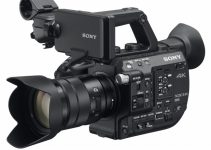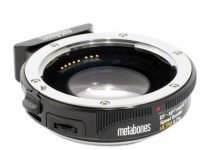Modern digital camera and sensor technology have reached the point where now everyone can afford to shoot in high-quality codecs, such as Raw and ProRes recording (now in all flavours) even on a $1,000 camera like the Blackmagic Pocket Cinema Camera. The sub-$10K market segment is extremely competitive with the Sony FS7 offering advanced features such as onboard 4K XAVC recording, High-Speed Full HD recording up to 180fps, as well as the ability to shoot in S-Log3 gamma, all features usually reserved for cameras costing at least twice as much.
However, even with all that at your disposal, shooting in Log, may not always be the right approach for every project. There is a solid reason why there are so many successful colourists working on thousands of projects every day. For instance, if yours requires a substantial colour correction work it’s better to choose a camera that shoots Log gamma format or records Raw in order to get the maximum dynamic range of the sensor and preserve all bits of colour information you can to leave enough room for as many creative decisions as possible in the post-production phase.
It’s a great asset if you are an experienced cinematographer and colourist at the same time, however in most of the time, it’s not the case for many of us. And, it isn’t meant to be this way. Usually, both Log footage and Raw require a lot of adjustments such as correcting the colour balance and exposure, brightness and contrast of the image, matching the different shots, achieving a certain look, etc. before we see the final version. It’s hard to accomplish all these tasks by only adding a couple of nodes in Resolve. Usually, the professional colour-grading involves much more work, patience and experience and there is not only one right way to go with.
So, is it better to record Log or Raw or simply shoot in Rec.709 mode? Before answering this question one should take into consideration that usually the storage and system requirements for Raw, and especially 4K Raw are pretty intensive. Check out this write-up on hard drive space requirements for different shooting scenarios, including 4K. On the other hand, Log is a perfectly viable alternative that is much more efficient overall and certainly more post production friendly. Further, if your project has a tight schedule and you should move as fast as possible on set, shooting in Raw or Log could be quite overwhelming.
Here is an example of the Canadian-based an award-winning producer and cinematographer Dennis Hingsberg who demonstrates his colour-grading workflow with the Sony Fs7‘s S-log3 footage. This is a simple case in which he shows us his colour-correction/grading breakdown of a single frame that involved more than 10 nodes to get to the final look.
Sony FS7 slog3 color grading breakdown video from dennis hingsberg on Vimeo.
Hinsberg did not use any 3rd-party plugins to grade the image. It was done by hand using approximately 10-12 nodes in DaVinci Resolve. However, he did use the Kodak 2383 LUT which is designed for Cineon based log curves and one of the reasons Dennis have become a fan of the slog3 gamma curve.According to him its near identical to the Cineon curve making it compatible with existing Cineon based workflows as well as LUTs.
This is what also he shares from his experience with the FS7’s S-log3 footage:
I felt overall the image data held up quite well. It was quite easy to break the codec in the shadows when doing certain color passes so I had to scale back some of my adjustments. In this frame there are a lot of different color temperature light sources which I did not spend too much time to correct by desaturation or editing highlight level balance.
Dennis Hingsberg also shares that the video from the FS7 behaves almost identical to the F5 and F55 footage and “doesn’t seem to leave a lot left to be desired”. Overall, the FS7 is a high quality 4K camera, especially for the price, making it very suitable for various of shooting situations providing a very flexible and userfriendly post-production workflow due to the robust internal XAVC codec.
[via hingsberg.com]
Disclaimer: As an Amazon Associate partner and participant in B&H and Adorama Affiliate programmes, we earn a small comission from each purchase made through the affiliate links listed above at no additional cost to you.



